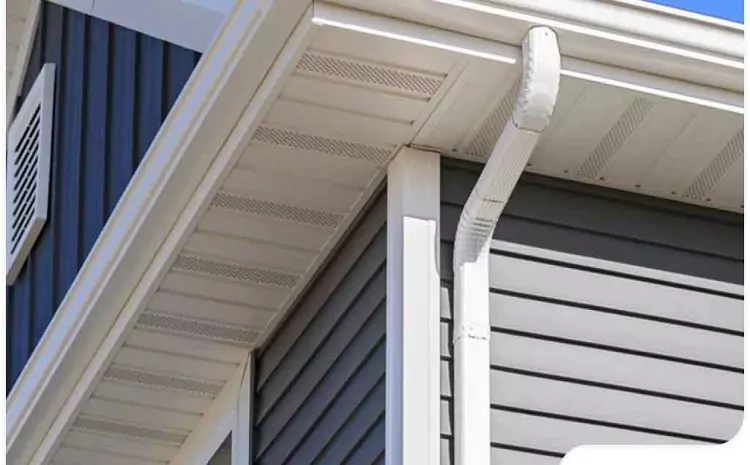In the construction industry, soffit boards are not a popular topic of conversation – at first glance, the technological solutions used to produce them appear to be relatively uncomplicated. In practice, however, soffit boards are essential components that contribute significantly to both the aesthetics and functionality of buildings. Through their installation, walls, sheathing, roof trusses or thermal insulation are protected from the effects of moisture. However, does every soffit board look the same? Or do the differences appear in the scope of their performance? Let’s check it out!
Timber Soffit Boards
Timber soffit boards have long been cherished for their natural beauty and timeless appeal. Typically crafted from robust woods like cedar or redwood, these soffits add a touch of elegance to any building. They can be customized with different stains and paints to match the architectural style. However, timber soffits demand regular maintenance to prevent decay and insect damage, requiring periodic painting or sealing.
PVC Soffit Boards
Polyvinyl chloride (PVC) soffit boards are a popular choice due to their durability and minimal maintenance needs. These boards are available in an array of colors and finishes, allowing for a high degree of customization. PVC soffits are resistant to moisture, rot, and pests, making them ideal for various climates. They are also lightweight and easy to install, which reduces labor costs and time.
Steel Soffit Boards
Steel soffit boards are known for their strength and longevity. These boards are often coated with protective layers to enhance their resistance to corrosion and rust. Steel soffits are an excellent choice for areas prone to extreme weather conditions, as they can withstand high winds, heavy rain, and snow. They also offer excellent fire resistance, adding an extra layer of safety to the building.
Cement Fiber Soffit Boards
Cement fiber soffit boards are made from a blend of cement, sand, and cellulose fibers. These boards are incredibly durable and can withstand harsh weather conditions, fire, and pests. They can be painted in any color, providing a wide range of design possibilities. While they are heavier and more difficult to install than other options, their long-lasting nature and low maintenance needs make them a worthwhile investment.
Metal Soffit Boards
Among the various soffit options, metal soffit boards have become increasingly popular for their durability, sleek appearance, and minimal maintenance requirements. Metal soffit boards are typically made from materials such as aluminum or galvanized steel, which are treated to resist corrosion and rust. These boards offer robust protection against the elements, making them ideal for modern constructions.
One of the key benefits of metal soffit boards is their excellent ventilation properties, which help prevent moisture buildup in the attic and roof spaces. This ventilation is crucial for maintaining the integrity of the roof structure and preventing issues such as mold and mildew. Metal soffits are also easy to clean and maintain, requiring only occasional washing to keep them looking new.
Composite Soffit Boards
Composite soffit boards are manufactured from a combination of wood fibers, plastic, and binding agents. These boards offer the aesthetic appeal of wood with enhanced durability and resistance to weathering, rot, and insects. Composite soffits are available in various textures and colors, providing flexibility in design. They are also low maintenance, needing only regular cleaning to stay in top condition.
Vinyl Soffit Boards
Vinyl soffit boards are favored for their affordability and ease of installation. Available in a wide range of colors and styles, vinyl soffits can complement any architectural design. They are resistant to moisture, rot, and insects, and do not require painting or sealing. However, vinyl soffits may become brittle and crack over time, especially in extremely cold climates, so they are best suited for moderate weather conditions.
Summary
Choosing the right type of soffit board is crucial for both the appearance and functionality of a building. Each material offers unique benefits, from the classic charm of timber to the modern efficiency of metal soffit boards. Metal soffit boards stand out for their durability, low maintenance, and superior ventilation properties, making them an excellent choice for contemporary constructions. By understanding the advantages of each type, builders and homeowners can select the most suitable soffit boards to enhance their projects’ longevity and aesthetic appeal.

